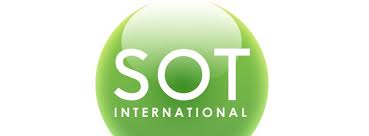Within the Chiropractic profession there are a variety of specialties or domains of techniques. Sacro occipital technique is one of these that uses a comprehensive approach to client assessment as well as gentle and specific protocols for client management. Here we explore Sacro occipital technique in detail so you have a greater understanding next time you visit your SOT Chiropractor.
Sacro occipital technique is an extremely gentle Chiropractic treatment therapy that was originally founded during 1925 by Dr. Bertrand De Jarnette. The technique is referred to as SOT given the relationship it holds between the sacrum (the triangular bone at the base of the spine) and the occiput (the base of the skull). SOT primarily focuses upon the Cerebro-spinal fluid (CSF) pumping mechanism which has been shown to alter following Chiropractic care. The CSF is the fluid material that surrounds the spinal cord throughout the nervous system.
Many Chiropractic modalities place a large emphasis on neurology, biomechanics, nutrition and soft tissues. While these are important for assisting in wellbeing, sacro occipital technique promotes optimal healing for the spine, pelvis, cranium, organs, extremities, nervous system, brain and muscles. These techniques help to promote balance, neurological integrity and general function of the organs and spine.
Sacro Occipital Technique Category System
The category system of diagnosis and analysis allows practitioners to have a specific framework to guide their care and management. Chiropractors address spinal misalignment or neuromechanical dysfunction of which are bodies may become adapted to over time. Sacro occipital technique considers that these adaptations produce three distinct categories of client presentation. SOT practitioners are equipped with specific management protocols to address each of these categories.
Category One
This category occurs when the sacroiliac joints become fixated and may cause compensatory changes in the hips, sacrum and remaining spine. As discussed previously, the natural CSF mechanics are effected by both the sacrum and occiput therefore if the sacrum has compensatory changes this will directly influence CSF flow.
Category Two
Category Two presents when the ligaments that provide support to the sacroiliac joints become stretched or sprained. This action disturbs the balance of the pelvic area and therefore spinal column.
Category Three
Sitting neatly between each spinal vertebrae is the intervertebral disc. These discs provide the necessary shock absorption and support that is required of a freely moving and mobile spine. Category three focuses on cases whereby the intervertebral disc does not provide sufficient space between spinal bones which may interfere with normal nerve function.
If you’re specifically looking for a Sacro occipital technique certified practitioner please visit the following link by clicking here.


Recent Comments